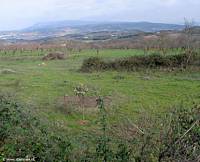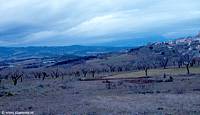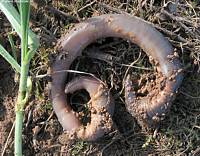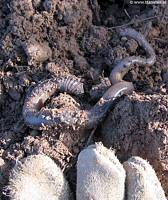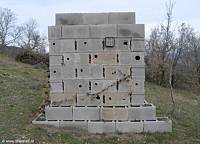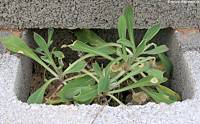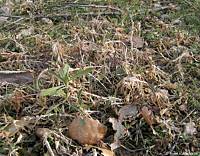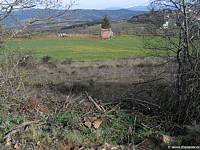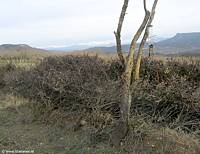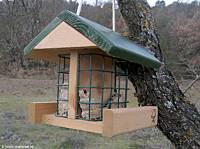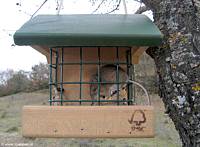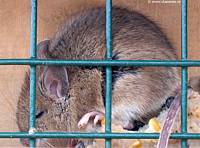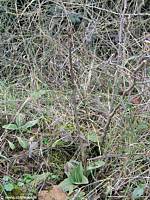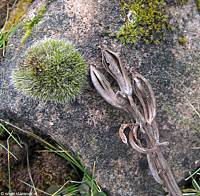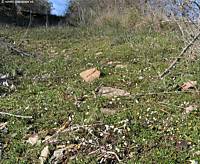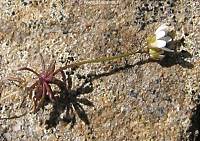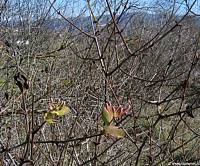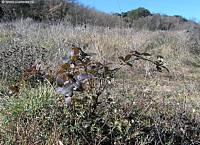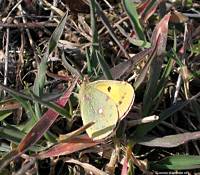|
|
Nature
Switched On
|
|
|
introduction |
2007 February 10 & 11, Saturday & Sunday This weekend much of the work consisted of removing
the pile of half-decomposed brambles roses, stones and earth
on the extreme north point. Our future house is planned just behind
the Loquat in this photograph (of two months ago), with views over
the future pond, orchards, fields and mountains and this heap simply
doesn't fit in aesthetically. But here again a clear conflict with
ecological values:
|
Looking north. |
|
After the job, just before dark and rain. 11 Feb 2007 18:49 |
||
|
Finger-thick earthworms. |
||
|
I put some of the bramble
b The comment about higher temperatures of this biowall of 3 February seemed to be further confirmed by these two photographs of Silene vulgaris, the first was made at the foot of northern shadow face of the wall while the second, showing the Silene in a clearly worse condition, was made three metres to the east in open sunlight. Perhaps the role of wind is also of some importance.
|
||
|
The biowall provided with bramble branches. |
||
|
Silene vulgaris at the foot of the
northern face of the biowall. |
Silene vulgaris at
3 metres to the east. Sunday 9:50 |
|
|
|
Another 'management' operation was
the cutting and planting of
four Common Figs (Ficus carica) using branches of an old Fig
tree already present. They must be very easy to reproduce in this way and
this is the right time.
|
|
|
Looking north-east in the western lower part.
|
||
|
At the beginning of the year I had installed some facilities for
birds but until now we hadn't seen much activity around them except
for the Red Robin who at times even seemed to demand to be fed with
his insisting chirping. Strangely enough on this feeder we had bought
from Vivara, the pasta
was eaten for more than 50 % on the
This birdfeeder should of course hang a bit more separated from the tree trunk but as the birds don't appreciate the food too much (unthankful creatures) and the mouse does, I leave it for the moment where it hangs. I suppose it will stimulate the population of mice on my terrain which in turn means more food for the owls that I am trying to attract with nest boxes. An indirect form of birdfeeding let's say.. |
||
|
A birdfeeder hung in an almond tree 2 metres
from the caravan. |
||
|
The puzzling birdfeeder in an
almond tree 15 metres to the north of the caravan. Sunday 9:41 |
||
|
The intruder in full action. |
The Wood Mouse: brown, 5 to 6 cm long with an even longer two-coloured tail and big ears. | |
|
Another puzzle was the
orchid I mentioned last
|
||
|
One of many rosette of typical leaves but this
one still with a dried flower stalk from last season. |
||
| Detail of the dried fruits. Notice the very small seeds, typical for orchids. | ||
|
Spring was really in the
air and on the ground these days. One of the earliest heralds is
usually the annual
Erophila verna, which germinates in
autumn and flowers at the end of the winter, avoiding this way the
dry and hot summer. T
These flowers of a Lonicera etrusca had been here on this shrub since the beginning of January and they don't seem to know what to do. Perhaps another indication of climatic turmoil.
This other Honeysuckle (?) on the right didn't show any flowers or flowerbuttons but simply stayed a brown-green colour during winter.
An early guest to our terrain was this Clouded Yellow (Colias croceus). Spring can't be very long..
|
||
|
A field of
Erophila verna on the
highest terrace. |
||
|
Close up of
Erophila verna. Saturday 12:28 |
||
|
Looking east on the highest terrace. |
||
|
Lonicera ? Looking west in the eastern part. Saturday 12:13 |
||
|
Colias croceus among some leaves
of Holcus lanatus
(turned red probably because of
frost) |
||
|
introduction
|
|
